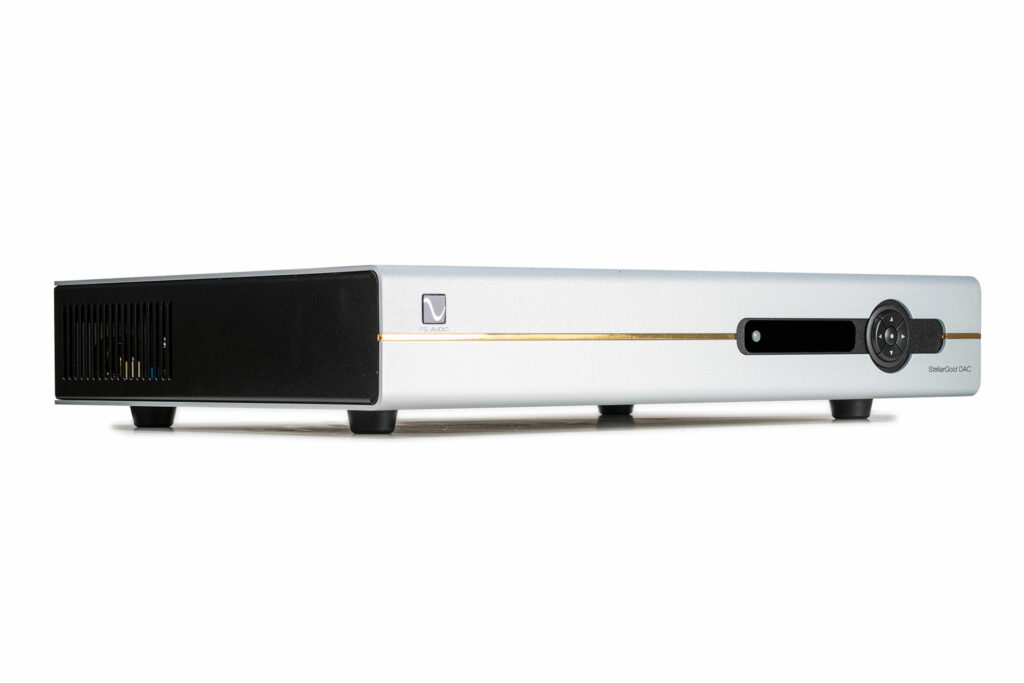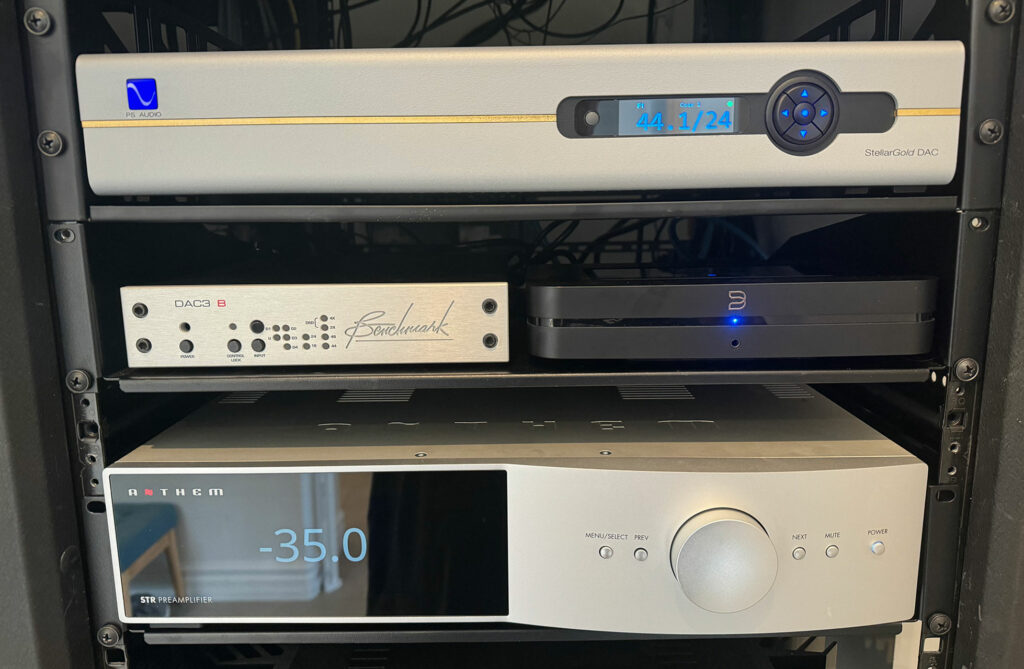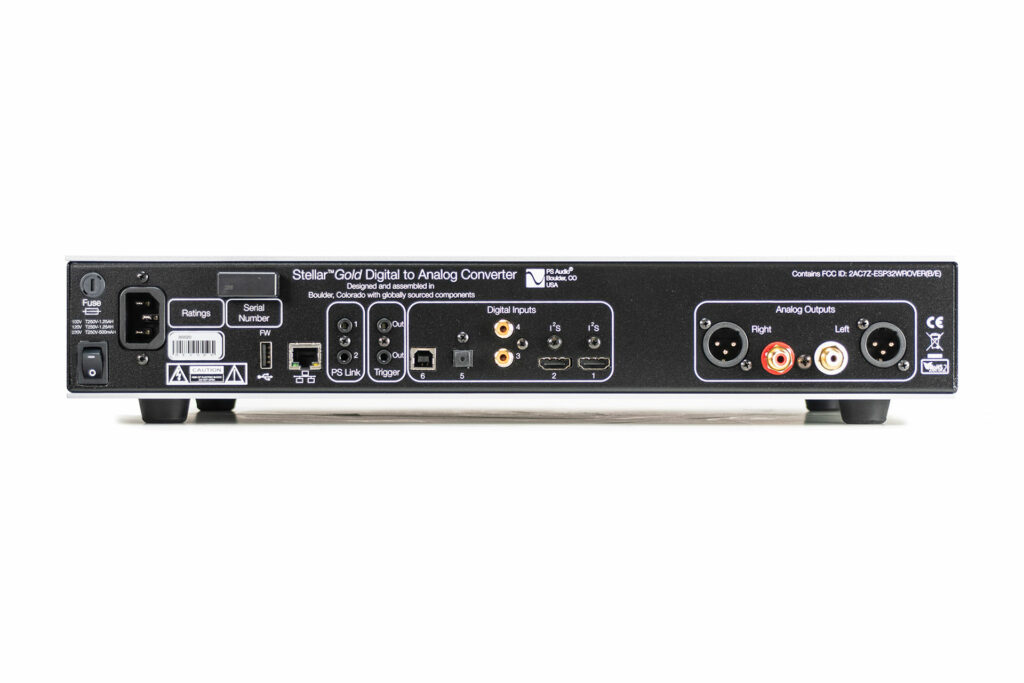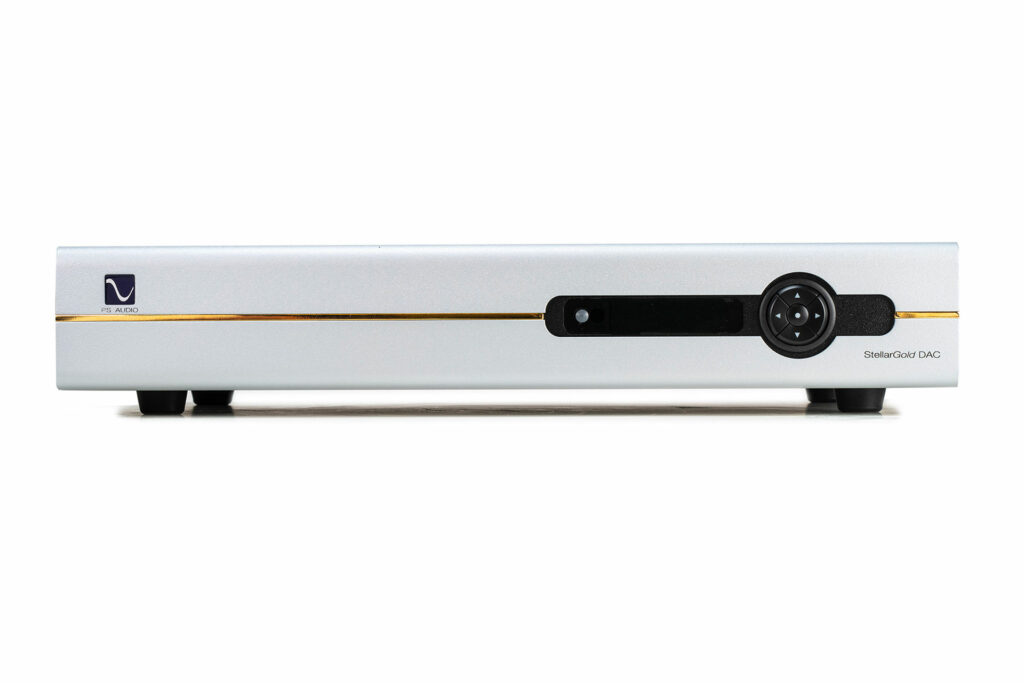PS Audio is one of the most time-tested and trusted brand names in the audiophile hobby. Not every audiophile knows that, a few years back, PS Audio made the controversial move to dump all of their traditional dealers, thus leaving them an almost exclusively Internet-direct brand in the U.S. (they sell through dealers Internationally). PS Audio isn’t the only company to make radical business model moves, as Bowers & Wilkins ruffled more than a few feathers when it dumped their longtime sales reps, and eventually opened national distribution via over 200 Magnolia stores. This past fall, I got a chance to visit PS Audio’s Boulder, Colorado-area factory, which gave me a chance to spend some time with PS Audio’s founder Paul McGowan’s son, Scott. He got me a sneak peek to listen to their new, lower-cost, somewhat “upside-down looking,” $10,000 per pair speakers, as well as a sit-down in some of their other well-treated audiophile listening rooms. I even got to see Arnie Nudell’s personal pair of gigantic Infinity IRS Beta speakers, which they have upstairs in their factory, along with all of the legacy components from decades of audiophile designs.
The PS Audio Stellar Gold DAC is a $3,999 digital to analog converter that makes it exactly half the price of the recently-reviewed PS Audio DirectStream DAC MKII (read Paul Wilson’s review here). Like its big brother, the PS Audio Stellar Gold DAC uses a four-DAC chip configuration per channel, and that is with ESS 9038 converters. In an increasingly digital world, the PS Audio Stellar Gold audiophile DAC wants its Hollywood audition to be at the core of your audiophile system. Is it worth the meaningful investment? Let’s find out…

What Makes the PS Audio Stellar Gold DAC So Special?
- (updated 5/31/24) Without question, the most important part of the PS Audio StellarGold DAC is its four-chip per channel design. They aren’t the only audiophile or pro audio company doing such a thing to combat the evils of digital jitter in an audiophile system, but it is a somewhat unique and effective way of addressing one of the biggest sonic maladies in the digital audiophile domain.
- The biggest reason that I have historically advised most of our readers in years past to be beyond-careful before investing in high-end audiophile DACs is their well-documented lack of upgradability. Today’s new audiophile DACs, like the PS Audio Stellar Gold DAC, are much more upgradable via firmware or software, and that protects your investment much better than before, thus overcoming my long-time objection about this formerly volatile audiophile component category. The PS Audio Stellar Gold DAC’s bigger brother has already had a software upgrade, and I know audiophile luminaries who are raving about the sonic improvements since the launch of that DAC. The PS Audio Stellar Gold DAC hasn’t had the same upgrades, but it is capable of that, and that makes it special.
- The ESS 9038 Pro is a fine semiconductor and capable of doing many digital conversion feats that were, not all that long ago, simply unthinkable in the audiophile space.
- The build quality of the PS Audio Stellar Gold DAC is far better than I expected. This American-made DAC is built to last decades. The metal work is solid, modern-looking and correctly-sized (when so much of the competition is not).
- The PS Audio Stellar Gold DAC is capable of decoding DSD files up to 256 bits. Not every DAC focuses on DSD performance, but for those with SACDs or streaming DSD, it can be a very close proxy for the actual master tape and a most worthy source in your system. The PS Audio Stellar Gold DAC is up to the challenge here for DSD.
- Today’s digital audio products are increasingly semiconductor-based, be they GaN amps or digital components like this audiophile DAC. They all benefit from having a killer power supply, and the PS Audio Stellar Gold DAC doesn’t disappoint in that category. PS Audio uses multiple “low impedance” (as they call it) power supplies to make sure that this digital audiophile component delivers the cleanest, best power that today’s high-end, semiconductor-based gear demands.
- The PS Audio Stellar Gold DAC is a quiet component, meaning it has very little reported signal noise. Noise is bad for us audiophiles. Lack of noise is what you pay for when going for the Nth degree of performance, and the PS Audio Stellar Gold DAC delivers a very quiet signal from your digital sources – reportedly with a signal to noise ratio of upwards of 127 dB. That’s a lot of reported quiet.
- The PS Audio Stellar Gold DAC comes in silver and black. I prefer the silver (almost looks white) finish, but both look really well-dressed. Even PS Audio’s low-cost Sprout 100 integrated amp is built well and dressed nicely, and that product is under $1,000. This PS Audio Stellar Gold DAC is much nicer, as you would expect.
- The remote on the PS Audio Stellar Gold DAC isn’t crap, when most in this category are. I didn’t need to use the remote too often, as I wasn’t switching too many inputs, but thank God somebody got the memo on how to provide a reasonable, not shit-tastic remote. Good work, PS Audio.
Why Should You Care About the PS Audio Stellar Gold DAC?
While you might have a vinyl rig, the audiophile who pops for the PS Audio Stellar Gold DAC at $3,995 is looking for a very serious digital converter for their increasingly digital music sources and/or local files. Getting your streaming right is a big deal, and it is a part of the hobby where we are seeing more and more improvements lately. Pair the PS Audio Stellar Gold DAC with a PS Audio AirLens endpoint component ($1,995 direct from PS Audio), and you’ve got an even more powerful digital audiophile front end. Also, the audiophile who invests in a PS Audio Stellar Gold DAC is looking to protect their investment in ways that were simply impossible in the past. Will this be the last DAC that you ever buy? Ever is a long time, but this high-end DAC has the potential to be highly relevant for a much longer time with much better resale, and any audiophile should care about that.

Some Things You Might Not Like About the PS Audio Stellar Gold DAC
- There are some audiophiles still caught up on MQA, and the PS Audio Stellar Gold DAC doesn’t support the now pretty-much-dead format. Yes, Lenbrook bought the technology, but it is very unclear what the plan for this failed format is, but some folks make a major issue of this omission in an audiophile DAC.
- The screen on the front of the PS Audio Stellar Gold DAC is pretty underwhelming compared to other DACs in the market today. When looking at a DAC like the $849 Eversolo DMC-6A (read Greg Handy’s review), or any number of more expensive HIFIROSE products, the lack of a sexy LED or OLED screen is of note with the PS Audio Stellar Gold DAC. Power supplies are more important. So is the implementation of better semiconductors, but at $3,999, you might want a better or sexier screen on the front of the unit.
Listening to the Benchmark PS Audio Stellar Gold DAC…
The last thing that I want to sound like here is a broken record, but I’ve been listening to a lot of DACs lately, and that means that I’ve been listening to some of the best recorded music that I know – over and over again. With the volume matched (any good reviewer knows that everything sounds better when louder or looks better when brighter), I was able to compare a number of in-house DACs to the PS Audio Stellar Gold DAC, which has been fun as well as sonically enlightening. My core reference system right now includes gear like a Bluesound Node, an Anthem STR stereo preamp reviewed by Andrew Dewhirst and used by three reviewers on staff as their reference (DAC not engaged, obviously, as the internal one is easily bypassed), a Pass Labs XA-25 Class-A power amp, and Orchard Audio’s Starkrimson Mono GaN amps, all on Bowers & Wilkins 802 D4 speakers, with no subwoofer in this system. Wireworld and Monoprice cables for connections were used as well.
“The Court” (bright-side mix) from Peter Gabriel’s latest album, i/o, is a good example of a very modern recording, but from a familiar artist who sounds as good today as he did in is solo act prime in the MTV era. What was notable with the PS Audio Stellar Gold DAC in the loop was the bass. Not overblown or bloated, but the PS Audio delivers (think: like Krell amps of the past) a very strong performance in the low end that makes it sonically noticeable. The bass guitar had an attack to it that I didn’t get from the Benchmark DAC3 B or even on the more expensive Bricasti M3, which was an excellent competitor, but the PS Audio Stellar Gold DAC delivered a modicum more of overall sonic balance. At the midpoint of this new pop song, there’s an acoustic piano and, despite hearing this track on upwards of five different DACs, the PS Audio Stellar Gold DAC delivered one of the most musical, open and airy presentations of that piano recording. There was really good imaging, but even more impressive was the overall depth of the soundstage with the PS Audio Stellar Gold DAC in the loop. Make no mistake, this is a high-end DAC, and delivers the goods for the money.
One standard that I hold most excellent audio components to is the Jimi Standard which means… how good does a component like the PS Audio Stellar Gold DAC sound playing back musically important but legacy recordings? In this case, from QoBuz, Band of Gypsies is the band configuration that replaced The Jimi Hendrix Experience and, in many ways, it was a more powerful and evolved band that played in 1970. The live performance of tracks like “Power of Soul”continued the deep, powerful bass presentation heard from the PS Audio Stellar Gold DAC. The bass didn’t have that crisp, punchy sound that you get from a more modern recording, like the Peter Gabriel example listed earlier, nor should it, as this live and aged recording just isn’t as good by modern standards. What was important was how faithfully the PS Audio Stellar Gold DAC turned zeros and ones from a CD-resolution streaming file into sound, and that it did very well. The bass was solid and the anchor to the song, but the depth of the live recording was notable, too. With the PS Audio Stellar Gold DAC in the loop, you are given a ticket to musically time travel when listening to historically important and still highly relevant musical examples like this Hendrix gem.
Roger Waters’ bass on “Hey You,” the opening song of side three from The Wall,doesn’t go crazy low in terms of frequencies but, with the PS Audio Stellar Gold DAC in the loop, my system was energized with really engaging and powerful bass in ways that, albeit cliché, made me think that I might have a subwoofer in my system when I didn’t. And it wasn’t just crude low-end energy, it was as much the higher-frequency work of the now-kooky rock star’s bass playing that caught my attention. This fretless bass sounded great, but not too the detriment of the overall space, depth and imaging of the track, as those sounded fantastic as well. The burning sound of David Gilmour’s guitar solo at the 2:00 mark shows why you want the sound of your system to be neutral, in order to allow the sound of your recording to shine through. Gilmour’s (not as politically kooky these days as Waters, and no, Pink Floyd isn’t very likely to ever get back together) performance left me, on more than one spin through this track, sitting down mesmerized by the level of resolution, detail and overall recording excellence. While I don’t want to set your expectations for jaw-dropping WOW moments, what you can expect from the PS Audio Stellar Gold DAC is more of a reintroduction to what is actually recorded on your favorite music, be it HD tracks, modern mixes or classic legacy recordings.
Will the PS Audio Stellar Gold DAC Hold Its Value?
High-end audiophile DACs historically don’t hold their value very well, but the fact that PS Audio has exhibited the ability to update their flagship $8,000 DAC via software is a very impressive feat, and a very good indicator for the PS Audio Stellar Gold DAC’s long-term value. PS Audio is a well-known audiophile brand, which helps, but their direct-only business model in the modern era gives me a little bit of concern on the value department. They sell to their core base of clients more than market to new ones and, with no Amazon, no Magnolia, no Crutchfield and no Audio Advice, you just don’t have as many people potentially interested in the PS Audio Stellar Gold DAC, which isn’t a good thing. In the end, the PS Audio Stellar Gold DAC is going to hold up pretty well in terms of value. I wouldn’t make value a reason not to invest in a PS Audio Stellar Gold DAC, as there might be others that do 10 to 15 percent better on resale, but you should be more focused on whether this is the right sound (or lack thereof) that you want than if you get an extra $300 on resale.

What is the Competition for the PS Audio Stellar Gold DAC?
The Bricasti M3 at $6,000 (read the review) comes to mind as a key competitor. This DAC uses multiple converters like the PS Audio Stellar Gold, thus has a similarity in terms of the basic design of the component. The Bricasti M3 also has multiple internal power supplies, which is another commonality. The Bricasti also sounds studio-good in ways that woo many an audiophile to the ways of Bricasti, which is famous in the pro audio world for their world-class reverb unit. Three of FutureAudiophile.com’s staff use a Bricasti DAC as their reference, ranging in price from $6,000 to $10,000, as well as $19,000 – all expensive DACs, without question. The cost of using Bricasti’s internal streaming option (as a card) is $1,000 versus double that for a PS Audio AirLens, but the external option for a streamer from Bricasti is $2,500, which is $500 more than the PS Audio option.
The Benchmark DAC3 HCG at $2,399 (read the review) is a really pro audio-oriented, small form factor DAC that again uses multiple converters internally in an attempt to eradicate jitter from our audiophile worlds. This true-to-the-source DAC has no meaningful filters and doesn’t do a thing to mask or gloss over the sound. What you hear is what you get with the Benchmark DAC3 HCG, and that can be very appealing to critical-listening audiophiles. The Benchmark DAC3 HCG is also just a little more than half the cost of the PS Audio Stellar Gold.

Final Thoughts on the PS Audio Stellar Gold DAC…
The PS Audio Stellar Gold is a DAC that one might argue punches a little above its weight when you consider what you get in terms of performance and upgradability, compared to its overall cost. Then again, $3,999 is a lot of money for most audiophiles to invest in a DAC in a marketplace filled with full-featured digital to analog converters that are sexy as hell and are less expensive.
The audiophile interested in the PS Audio Stellar Gold DAC is looking to get the last drop of performance from their digital music sources. They aren’t looking for a sonic sound. They aren’t too likely to play with user accessible filters (think: EQ) to change the sound. The goal here is to hear as much as what is on the recording.
It has been a lot of fun to spend time with the PS Audio Stellar Gold DAC, as it has provided a few really eye- (and ear-) opening moments that allowed me a chance to really hear what is on the master tape of some of my favorite music. If this is what you are looking for from your next audiophile upgrade, might I suggest that you order up a PS Audio Stellar Gold DAC?




The PS AUDIO DIRECT STREAM DAC MKII does not use a four-DAC chip configuration per channel, and that is with ESS 9038 converters as stated at the beginning of this review. It is configured with 2 FPGA’S that can be updated with new & improved code by Ted Smith, the coding guru hired by PS AUDIO.
Please get your facts straight Sir!
Pompous or what?
I know the writer. I agree – pompous!!! 🙂
Hi Robert, you are correct. The DirectStream DAC MK2 uses two FPGAs, not a four-DAC configuration. I’m usually a pretty thorough editor but I missed that one.
Frank is a great guy.
He also fact checked the review with the team at PS Audio
Please note: we added some clarity about the use of multiple DAC chips that was incorrect. We’ve made note of that change in the copy and have worked with PS Audio to get the detail correct.
Note: the review (as all of our content) was fact checked by PS Audio’s PR firm as well as internal staff. With that said, error happen but thankfully, they can be repaired in the digital domain.
There were a number of rude, insulting and unprofessional comments posted that showed little to no respect and they’ve been deleted and rejected. Internet Trolls are not welcomed on FutureAudiophile.com. We DO however welcome any comments or questions about the facts of a review. We ask people to show the respect that they might when talking to someone that they don’t know. Insulting them, attacking a person that you don’t know professionally might be OK on the forums but not here.
Thank you for your understanding and allowing us to correct this issue.
Lucky for you, Jerry! For getting the chance to tour PS Audio’s facility and experiencing their nirvanic listening rooms. It is a goal of mine that I’m hoping to do next year, perhaps combing it with the Colorado held audio show (can’t recall its name at the moment). I would like to thank you for the great service you provide, through your reviews, to aspiring future audiophiles and also current audiophiles (like myself) who have started the journey but always keeping an eye on the latest products to enhance that journey.
I recently acquired the Stellar Gold DAC as an upgrade to PS Audio’s Stellar Integrated Amp internal DAC, as part of my journey to separate components, and no kidding, the noise floor, separation, and oh that bass, just stunned me. It was a real WOW moment.
Thanks again and keep the great reviews and other interesting news coming.